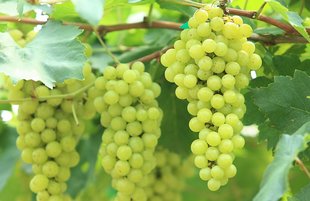Trebbiano: Grape Varieties, Regions, 10 Delicious Wines (2025)
What is Trebbiano and what makes it one of the most popular grape varieties in Italy?
The term Trebbiano refers to a group of white grapes with certain similar characteristics, but planted in different parts of the world, mainly Italy and France.
The grapes go by different names (Trebbiano Toscano, Romagnolo, Abruzzese, and so on) depending on where they’re grown.
So what are the different types of Trebbiano wine? Which are the best bottles to look out for?
In this article, we’ll explore the history, wine regions, and tasting notes of Trebbiano. We’ll also look at the best Trebbiano wines and the easiest way to buy fine wine.
Further reading
- Curious about investing in premium vintages? Get started with this Comprehensive Guide on Wine investment.
- Meanwhile, discover more about other popular grape varieties like the French Carmenere and the Italian Nebbiolo.
A Closer Look at the Trebbiano Grape Varieties
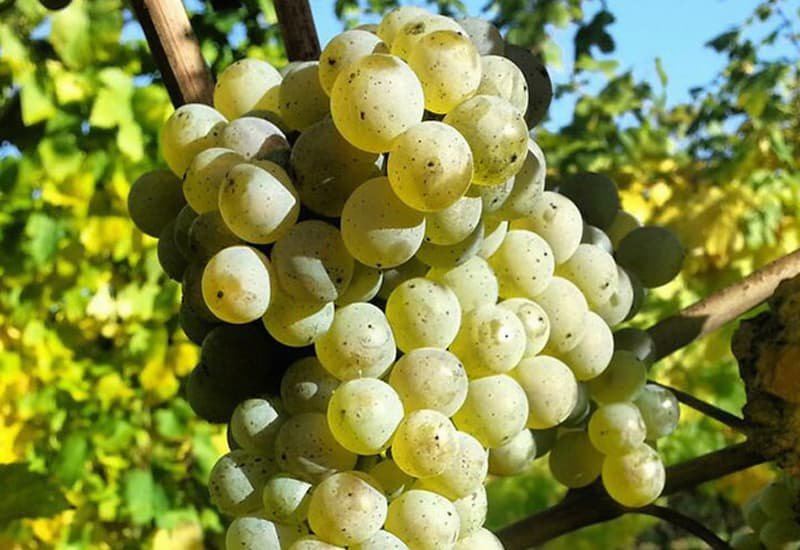
The Trebbiano white wine grape variety is grown mainly in Italy and France, where it is known as Ugni Blanc or Clairette Ronde. The grape is also found in other parts of the world, where it goes by different synonyms.
The “Trebbiano” group of white grape varieties share some common characteristics of color, berry size, and ripening period. However, genetic researchers haven’t been able to prove any relationship between the different regional variants of the grape.
Trebbiano wines are produced as both single varietals and blend wines. The wine produced from the Trebbiano grape resembles a thinner, unoaked Chardonnay and is often labeled as a table wine.
Interestingly, besides being used to make white wine, Trebbiano is also an essential component of brandies like Cognac and Armagnac. And before its use in winemaking, Trebbiano was commonly used to produce balsamic vinegar as well.
Fun fact: Sometimes, during winemaking, Trebbiano grapes undergo fermentation with their skins on, much like red wine grapes. During maceration, the juice gets a distinct orange color from the skins, transforming the Trebbiano into an ‘orange wine!’ Despite its color, this orange wine retains all characteristics of a typical white.
Let’s take a look at the history of this grape.
Trebbiano’s Eventful Past

The history of Trebbiano dates back to the Roman period in Italy (27 BC–476 AD.) The grape probably originated in the eastern Mediterranean region.
While some studies trace Trebbiano’s origin to the Garganega grape variety, this hasn’t been proven yet.
The name Trebbiano is either derived from the Campanian grapevine known as vinum trebulanum or from the Franconian term “Draibio” meaning “vigorous shoot.”
The vine was cultivated in different parts of Italy. Another Trebbiano grape variety emerged in Bologna in the 13th century.
The Trebbiano vine arrived in France in the 14th century. By 2010, the acreage of Trebbiano vineyards in France had far exceeded that of Italy.
Now let’s see where the Trebbiano grape is grown today.
Trebbiano Wine Regions
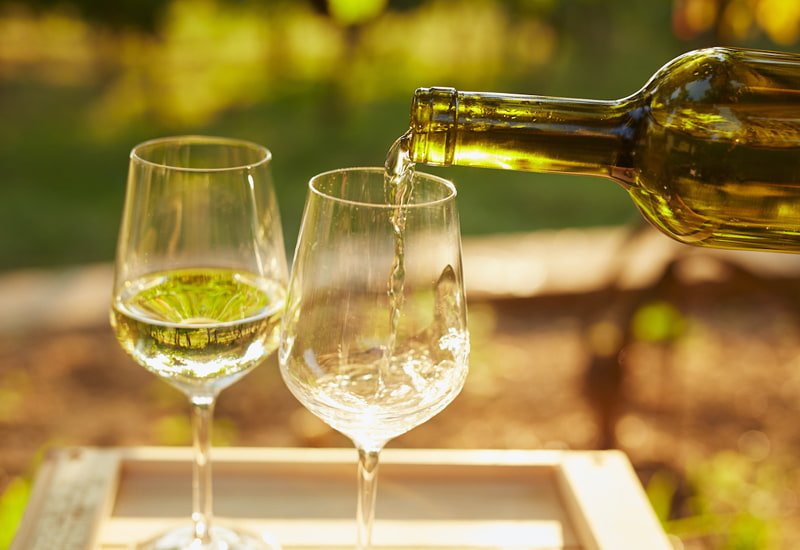
You’ll find different grape varieties of the Trebbiano family in these regions:
- Italy: Trebbiano is mainly planted in Tuscany and Marche. The grape accounts for a third of all white wine production in the country, with over 55,000-hectare vineyards distributed throughout Italy. The Trebbiano family is cited in more than 80 of Italy’s DOCs.
Different variants of the Trebbiano vine can be found at Umbria, Atri, the Emilia Romagna region, and Abruzzo in central Italy.
- France: Known as Ugni Blanc or clairette ronde in France, the white grape variety is mainly used in wine and brandy (Cognac) production. The 90,000-hectare vineyards span over the Provençal coast, the Gironde and Charentais, Corsica, and the Côtes de Gascogne area.
- Other Trebbiano Wine Regions: Besides Italy and France, Portugal and Bulgaria also cultivate Trebbiano grapes, where it is referred to as ‘Talia’.
Italian immigrants took the white grape variety to California, where it is used to make wine blends with Malvasia Bianca. Trebbiano is also grown in Australia, where it is classified as a table wine, and in Argentina.
Let’s look at the Trebbiano grape varieties in more detail.
The Trebbiano Grape Varieties
The most popular grape varieties from the Trebbiano family include:
1. Trebbiano Toscano(Ugni Blanc)
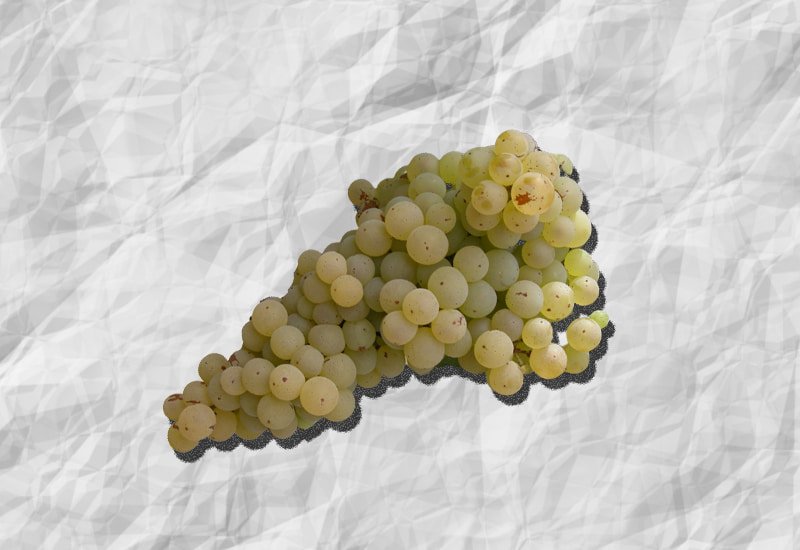
This white wine grape is native to Montepulciano in Tuscany, Italy, and the Bordeaux region in France. It is commonly used in brandy production (Cognac and Armagnac) as well.
The wines made from this varietal have high acidity, low alcohol, and sugar content and are suitable for blending. A common blending partner for this grape is Malvasia Bianca.
Ugni Blanc wines pair well with cheeses like Parmesan and Pecorino, white fish, seafood pasta, pesto, and roast chicken. Trebbiano Toscano is also a stellar accompaniment to Mediterranean cuisine.
2. Trebbiano Abruzzese

This Trebbiano variety grows predominantly in the Abruzzo region of Central Italy and produces wines with robust fruity flavors. The Trebbiano Abruzzese wines have the appellation name on their labels - Trebbiano d’Abruzzo. The most prominent Trebbiano d’Abruzzo winemaker is Masciarelli.
3. Trebbiano Romagnolo

Romagnolo is one of the oldest Trebbiano grape varieties. The Trebbiano Romagnolo vineyards are widespread in the Emilia Romagna region of Italy. This grape variety is also known as Trebbiano di Romagna and is used in both blends and single varietal wines.
4. Trebbianina

This white grape variety is mostly used in the production of balsamic vinegar. But it also creates beautiful white wines with a fruity flavor. The early-ripening grapes grow well on both flatlands and hilly vineyard plots in Italy.
5. Trebbiano Giallo
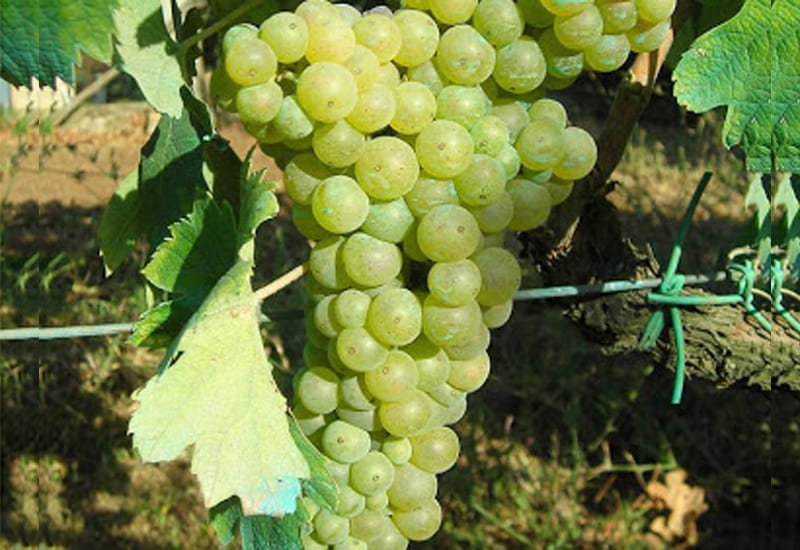
This Italian wine grape variety is the primary contributor to the blends made in the Lazio region. Apart from Lazio, it is also grown in Lombardy.
6. Trebbiano Spoletino

This is a unique Trebbiano variety (also known as Procanico) grown only in Umbria and the townships of Spoleto. The Orvieto whites made with Trebbiano Spoletino are known for their lovely floral tasting notes.
7. Trebbiano di Soave

This Italian grape variety is grown in Lombardy and Veneto. Trebbiano di Soave is also known as Verdicchio or Trebbiano di Lugana. Verdicchio wine is straw yellow in color with medium alcohol content and golden apple tasting notes.
If that has made it difficult for you to choose which wines to buy, here’s a handpicked list of the best Trebbiano bottles.
Best Trebbiano Wines To Buy In 2024 (Including Taste, Prices)
These are some of our favorite Trebbiano wines:
1. Emidio Pepe Trebbiano d'Abruzzo, 1979
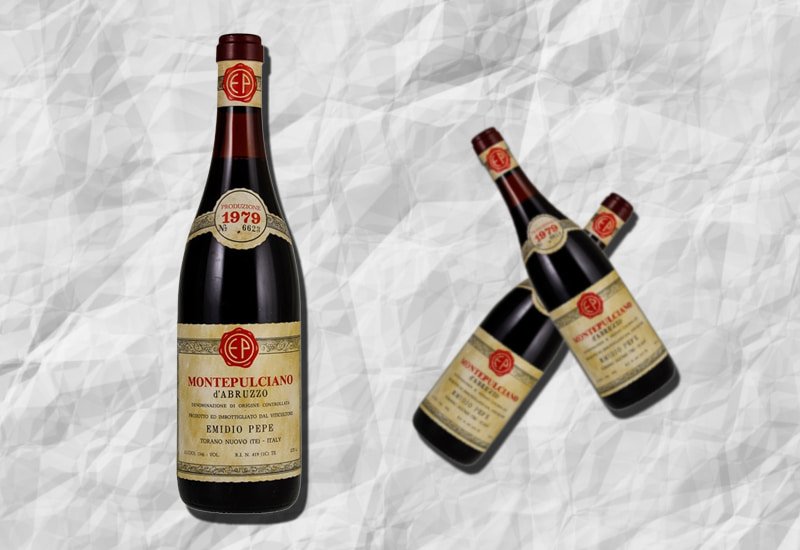
This vintage from the Emidio winery has low tannin levels and a sweet fruit aroma, characteristic of Trebbiano wines. The wine has subtle notes of licorice, leather, and an excellent long finish.
Price of Emidio Pepe Trebbiano d'Abruzzo, 1979: $691
2. Azienda Agricola Valentini Trebbiano d'Abruzzo, 1999
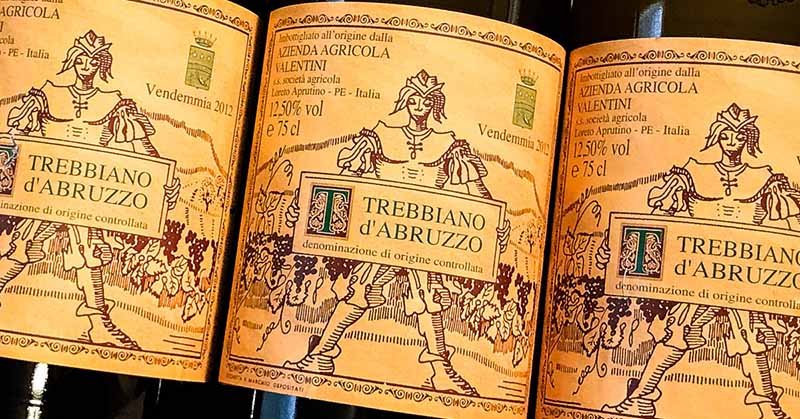
This Italian wine has notes of raisin, clementine peel, smoked ham, and anise. It has high acidity and a burnt sugar aftertaste with hints of sulphur. The wine is best served after decanting for a couple of hours.
Price of Azienda Agricola Valentini Trebbiano d'Abruzzo, 1999: $441
3. Rocca di Montegrossi Vin Santo del Chianti Classico, 2006
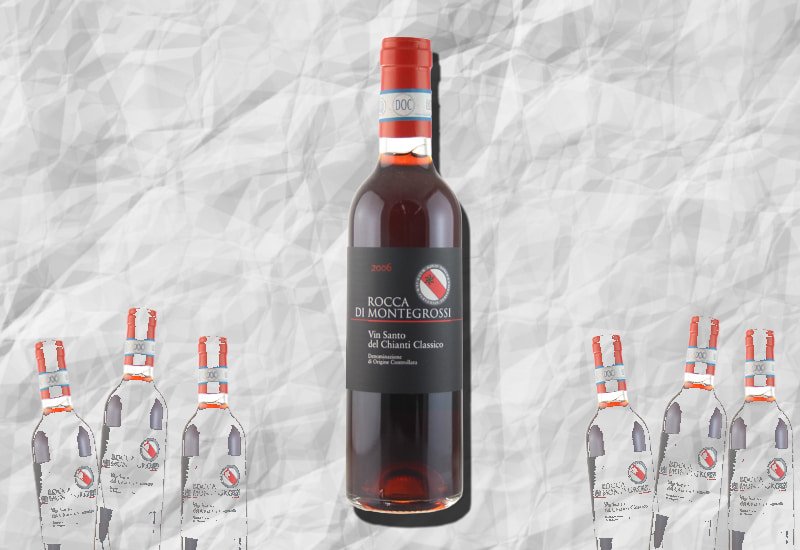
This vintage has a honey-like consistency and intense aromas. The wine has elegant citrus and crème brûlée tasting notes with a distinct minerality, medium acidity, and a 12.5% alcohol content.
Price of Rocca di Montegrossi Vin Santo del Chianti Classico, 2006: $132
4. Azienda Agricola Le Coste Paino, 2011
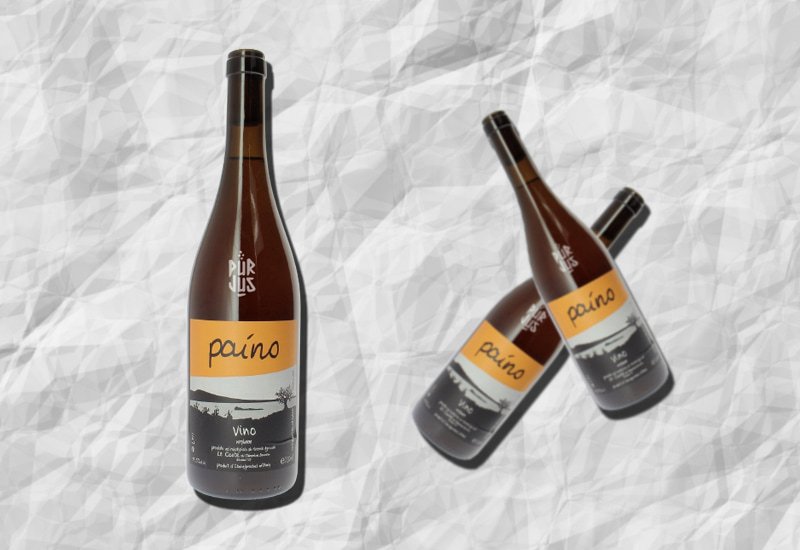
This well-balanced vintage is an infusion of tropical fruit and oak aromas. It is a light wine with tasting notes of rich citrus, nectarine, and passionfruit. Serve this wine along with white fish and pasta dishes.
Price of Azienda Agricola Le Coste Paino, 2011: $119
5. Petrolo 'Boggina B' Trebbiano Toscana IGT, 2015
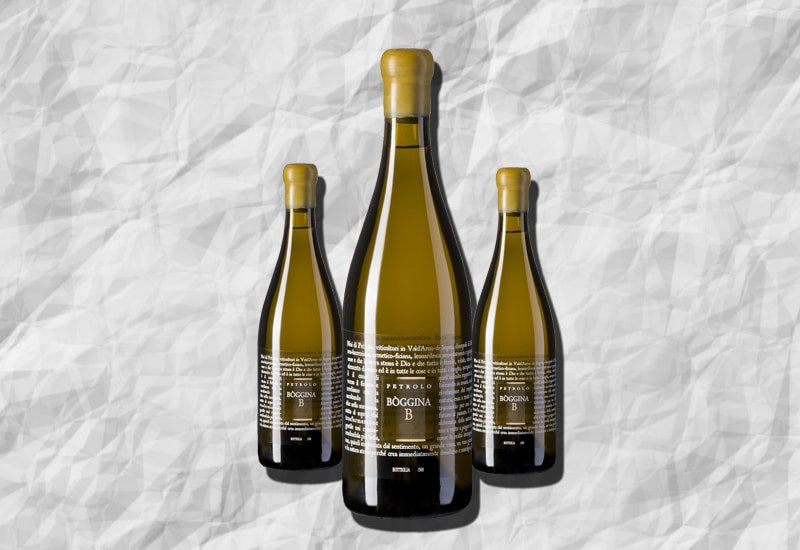
This wine has chewy tannins with hints of straw and almonds. It is highly structured with complex lemon rind, honeycomb, and dried apple aromas.
Price of Petrolo 'Boggina B' Trebbiano Toscana IGT, 2015: $82
6. Monteraponi Trebbiano Colli della Toscana Centrale IGT, 2018
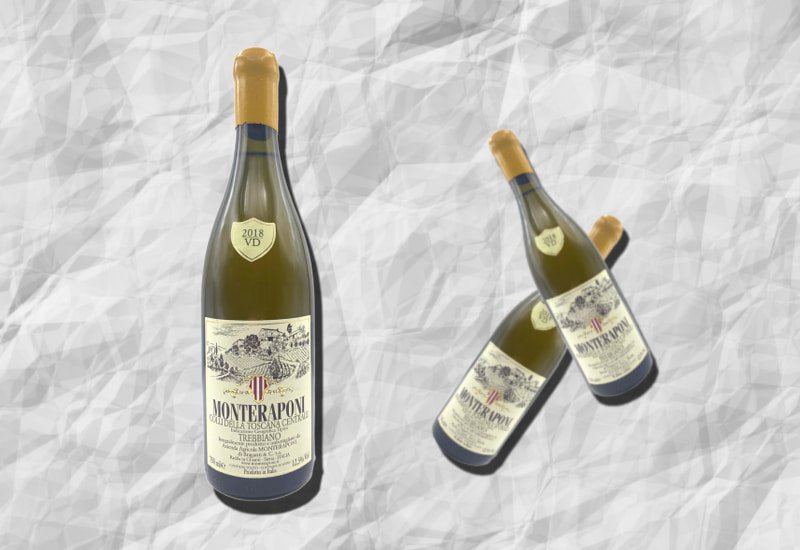
Here we have an Italian wine with excellent acidity and flavors of spice and herbs. It has a dark yellow color with a nice creamy texture and minerality. The winemaker recommends cellaring the wine for an extended period to release it’s aroma.
Price of Monteraponi Trebbiano Colli della Toscana Centrale IGT, 2018: $81
7. Paolo Bea Arboreus Bianco Umbria IGT, 2012
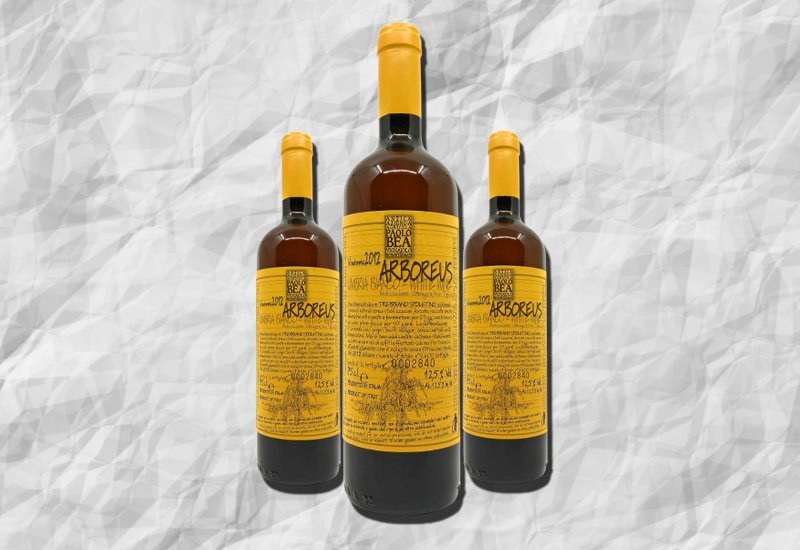
This wine is among the finest Orvieto whites and has savory dried orange blossom and citrus rind notes. With age, it develops complex characteristics but retains its freshness.
Price of Paolo Bea Arboreus Bianco Umbria IGT, 2012: $69
8. Azienda Vitivinicola Tiberio 'Fonte Canale' Trebbiano d'Abruzzo, 2017

This great wine is straw yellow in color with traces of green hues. The wine has apricot and tangerine flavor, balanced acidity, and high minerality.
Price of Azienda Vitivinicola Tiberio 'Fonte Canale' Trebbiano d'Abruzzo, 2017: $60
Now, let’s see if these luscious wines age well.
Does Trebbiano Wine Age Well?

Trebbiano wine is not suited for long-term aging. It is best enjoyed in its initial years when the fruit flavors are strong.
The Trebbiano Toscano and Trebbiano d’Abruzzo wines are an exception as the best-made ones can mature very well in a cellar for up to 10 years, retaining exceptional flavor.
If the delicate tasting notes of Trebbiano wine excite you, you should get hold of some of the wines that we recommended.
But, if you’re looking for investment-grade wines to cellar for the long-term, then scouring online wine sites, reviews, and doing the price research is going to be a real hassle!
Luckily, you have an ideal wine investing platform like Vinovest for buying your favorite vintages.
Here’s how you can go about it:
Buy Fine Collectible Wines Through Vinovest

Vinovest is a wine investment firm that helps you buy, sell, and store your favorite investment-grade wine bottles. Additionally, Vinovest will deliver your wine bottles to your doorstep (or to your buyer’s). You can always access your wine collection online or in real life hassle-free.
How it Works
It’s easy. Just follow these five steps:
- Sign up with an email address, name, and password.
- Assess your investment preferences and risk appetite by answering a few quick questions.
- Fund your account with at least $1,000.
- Go through the wines suggested by Vinovest as per your interests.
- Build a profitable wine portfolio while you sip on a fine Pinot Noir from the comfort of your home!
Benefits of Investing in Wine Through the Vinovest Platform
Vinovest provides several advantages that can make your wine investing experience stress-free and even fun.
1. Easy Buying and Selling Using AI-driven Technology
Vinovest’s Artificial Intelligence-based platform helps you trade fine wines from Bordeaux, Tuscany, and other major wine regions from anywhere in the world.
2. Best Prices
With Vinovest, you get below-retail prices for all your favorite wines. That’s because Vinovest gets its wines directly from winemakers, wine merchants, and wine exchanges.
3. Curated Portfolio by an Expert Wine Advisory Team
With Vinovest, you can start your wine investment journey even if you are not a wine specialist. The expert team of data scientists and wine sommeliers will help you build your portfolio step-by-step.
4. Authenticity and Provenance
Vinovest guarantees that your purchases are authentic since it traces the provenance of every bottle of wine you buy via the platform.
5. Optimal Storage and Safety
Your wines are secure with Vinovest. They store your wine bottles in bonded warehouses, which maintain optimal temperature, light, vibration, and humidity at all times. This gives you access to a world-class wine cellar without having to arrange and maintain one yourself.
6. Comprehensive Insurance and Security
Vinovest offers a competitive full insurance policy for your portfolio.
24/7 security cameras monitor the warehouses and ensure your collection’s security. Moreover, high-quality power backups maintain optimal climate conditions at the warehouses in the event of a power failure.
7. Low Overall Costs
You might assume that such high-end features come with a hefty price tag. But all these services are available at reasonable prices.
A nominal annual fee of 2.5% (1.9% for portfolios above $50,000) covers the purchase and sale of wines, authentication, storage, and portfolio management.
8. Deep network
Vinovest provides you with access to an extensive network of upcoming vineyards, private wine company sales, and limited vintage releases. Besides, they offer opportunities to participate in wine tasting events of renowned winemakers and vineyards.
Start Buying Your Favorite Wines Today!
Trebbiano produces flavorful white wines which offer a beautiful array of opulent aromas and tasting notes. This great wine is the perfect drink to pair with your dinner or serve at any celebration.
However, Trebbiano may not be your ideal investment-grade wine. So, if you want to start your own wine portfolio, Vinovest can help you find some of the world’s most desired collectible wine bottles.
So wait no more! Take the first step and sign up with Vinovest today.
